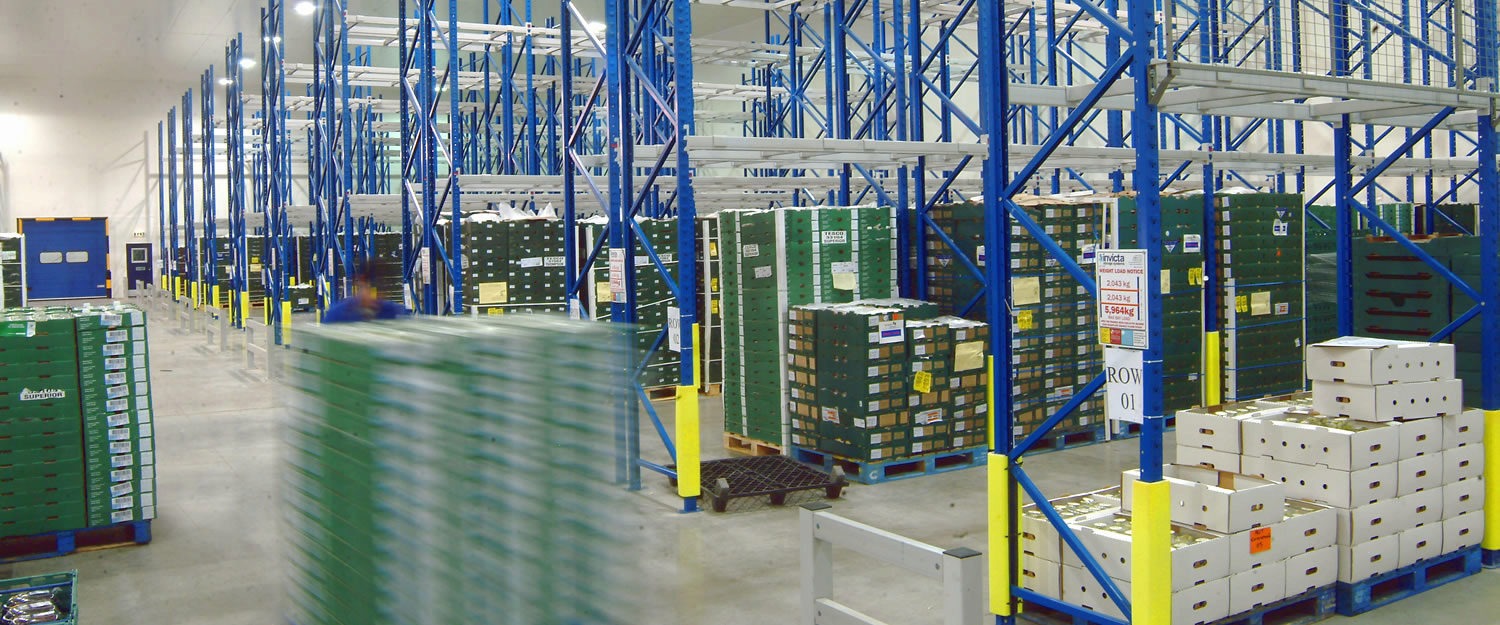For your information
You are being redirected to one of our divisional subsites which contains more detailed information on the required division. To navigate back to the main Invicta Group site, please click the link found in the footer at the bottom of the page.
How good warehouse design can improve your safety culture
12th July 2022
Planning for the present
Quick Quote
Contact Mick Coyne
To get a quotation or arrange a free site survey - Call Mick Coyne on
-
 UK
UK
Current location:
Quick Quote
Contact Mick Coyne
-
 UK
UK
Current location:
A good warehouse safety culture isn’t something that springs up overnight. Ensuring that safety is applied at all levels means instilling the importance of safety in every worker, and giving them the means and the support they need to identify and mitigate risks.
An under-appreciated aspect of warehouse safety is the physical design of the warehouse itself. By failing to consider the structural elements of your warehouse, you may be overlooking key safety issues – and denying your employees the opportunity to work in a safe manner.
Get the basics right
The first things to consider are the general tenets of warehouse safety, and whether you are meeting them. A basic risk assessment will identify glaring issues with your safety processes, while a racking safety inspection will detail any issues with the physical integrity of your pallet racking. It will then be up to you to address the points made by the assessments, and implement reforms and repairs.
Racking assessments should be carried out twice yearly, while general risk assessments should be undertaken annually, or when significant changes occur within the workplace. The most common issues are to do with damage to the pallet racking, which often occurs either through poor loading and unloading, collisions or general wear and tear.
However, this damage can also be a sign that your warehouse design is lacking. A large number of collisions or sustained damage in one area may indicate an issue with safe navigation, such as aisles being too close together, or not having enough space to turn and manoeuvre. Problems can also occur when traffic is forced to share aisles, further reducing the available space and causing vehicles to pass extremely close to racking.
Be safety smart
While a racking safety assessment may identify issues with your layout, not everything will be immediately obvious. Damage isn’t always linked to a particular cause, and it may be up to you to join the dots between aspects of your general risk assessment and racking safety assessment. Warehouse safety training for employees can help with this, as they will be better equipped to identify issues with your processes and connect incidents to design flaws.
The most common issue is nothing to do with the integrity of the racking at all, but simply that pallets are stored incorrectly. This may take the form of ill-fitting and unstable items, too many items on a rack (causing it to bow), or items being stored at a height that makes them difficult to retrieve (this could for instance mean heavy pallets being stored at height, increasing the risk of a forklift becoming unbalanced and falling over).
Another common issue is a failure to consider how the warehouse space is navigated. Often, navigation is left entirely to the discretion of the workers, with the onus on them to identify chokepoints, and avoid collisions using their own situational awareness. Doing this without any failsafes or controls however is inadvisable, as no matter how well-trained and disciplined people are, there is always the potential for mistakes due to fatigue, distractions or simple mistakes. As long as the warehouse design does not facilitate safe working, the safety culture of the business as a whole is undermined.
Modernise your warehouse
Solving these issues can take several forms. Perhaps the most obvious is to reconsider the design of your pallet racking, and whether it’s worth investing in a new racking system. A range of high-density pallet racking systems are now available, with options for various use cases and storage requirements. On average, a modern high-density racking system can as much as double your available storage space, or halve your storage footprint.
If you are having issues with collisions but want to retain the same density of storage, a good compromise may be a modern wide-aisle racking system. Other options such as double-deep racking can also be customised with an aisle width of your choice, depending on the dimensions and attributes of your vehicles. You could even extend to a system integrating robotics or an AS/RS, eliminating the human component completely.
If you are concerned about items being stocked and accessed in a way that compromises safety, you might want to look at different methods of access. A multi-tier system could be used to house pallets for picking separate from heavier-duty items, reducing vehicle traffic and providing dedicated walkways for foot traffic. This can be complemented by various stairs, lifts and chutes, allowing for the transit of goods to be separate from the transit of people.
Finally, it may be worth considering how you regulate movement in the warehouse. One option would be to impose a one-way system, ensuring that there is no possibility for collisions. This should be clearly indicated with floor markings, or even use a traffic light system if your warehouse is particularly busy. Alternatively, an advanced WMS could be used to regulate traffic based on sensor data, and push this information to operators’ mobile devices or to remote vehicles.
—
Warehouse safety is a holistic process, and every aspect of your warehouse design and your actions feeds into it. By giving equal importance to the place and your policies, you can instil a more positive safety culture, where the environment around workers enables them to work more safely and efficiently.
Accreditations & Affiliations







Start your project
Tell us about your project. Please complete this form. One of our sales team will come back to you with more details. If you prefer, you can drop us an email.




Share/Like this page